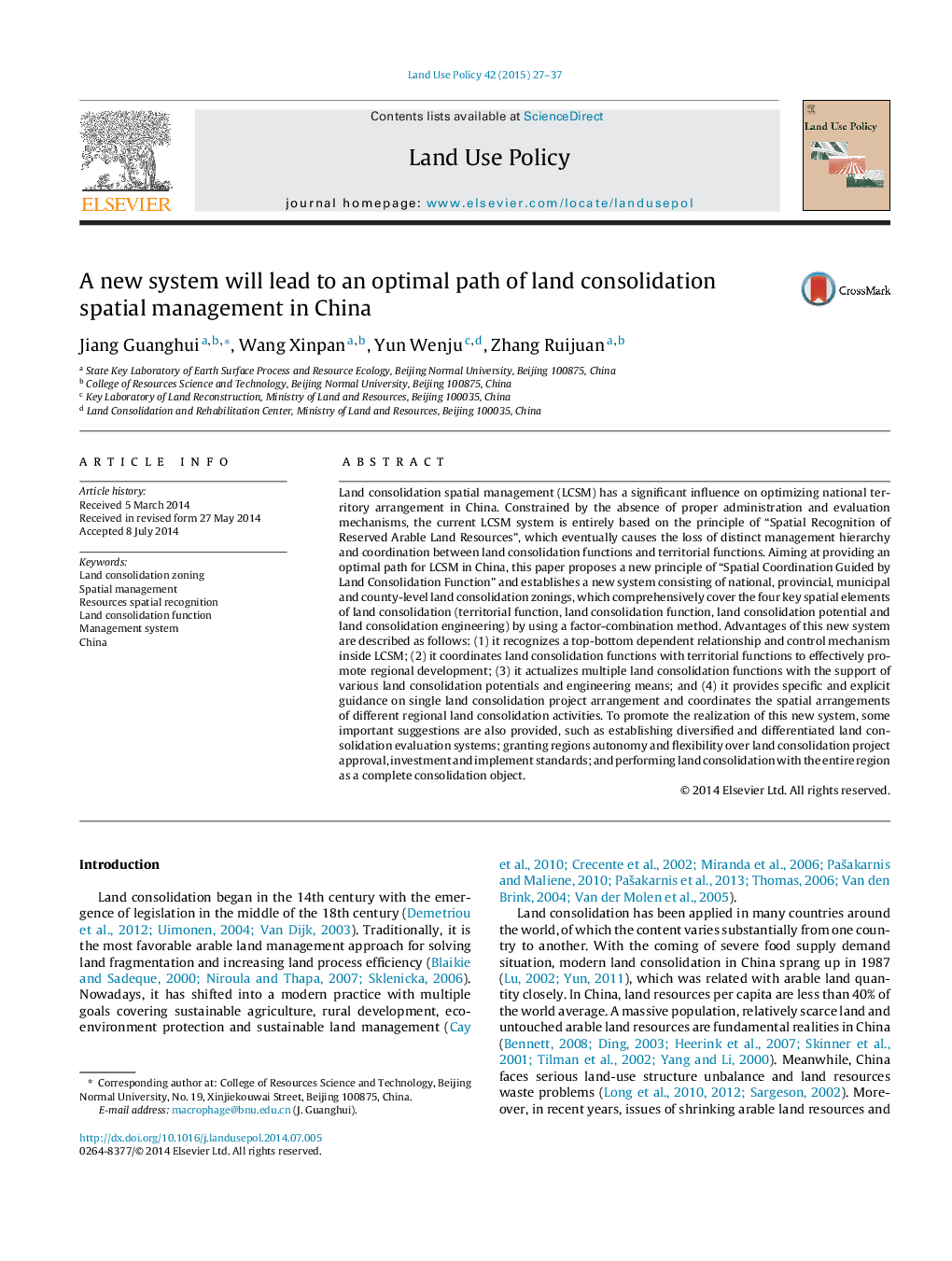| Article ID | Journal | Published Year | Pages | File Type |
|---|---|---|---|---|
| 6548342 | Land Use Policy | 2015 | 11 Pages |
Abstract
Land consolidation spatial management (LCSM) has a significant influence on optimizing national territory arrangement in China. Constrained by the absence of proper administration and evaluation mechanisms, the current LCSM system is entirely based on the principle of “Spatial Recognition of Reserved Arable Land Resources”, which eventually causes the loss of distinct management hierarchy and coordination between land consolidation functions and territorial functions. Aiming at providing an optimal path for LCSM in China, this paper proposes a new principle of “Spatial Coordination Guided by Land Consolidation Function” and establishes a new system consisting of national, provincial, municipal and county-level land consolidation zonings, which comprehensively cover the four key spatial elements of land consolidation (territorial function, land consolidation function, land consolidation potential and land consolidation engineering) by using a factor-combination method. Advantages of this new system are described as follows: (1) it recognizes a top-bottom dependent relationship and control mechanism inside LCSM; (2) it coordinates land consolidation functions with territorial functions to effectively promote regional development; (3) it actualizes multiple land consolidation functions with the support of various land consolidation potentials and engineering means; and (4) it provides specific and explicit guidance on single land consolidation project arrangement and coordinates the spatial arrangements of different regional land consolidation activities. To promote the realization of this new system, some important suggestions are also provided, such as establishing diversified and differentiated land consolidation evaluation systems; granting regions autonomy and flexibility over land consolidation project approval, investment and implement standards; and performing land consolidation with the entire region as a complete consolidation object.
Related Topics
Life Sciences
Agricultural and Biological Sciences
Forestry
Authors
Jiang Guanghui, Wang Xinpan, Yun Wenju, Zhang Ruijuan,
